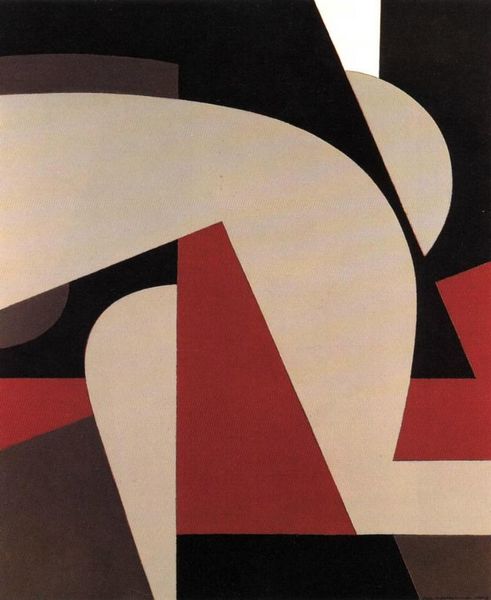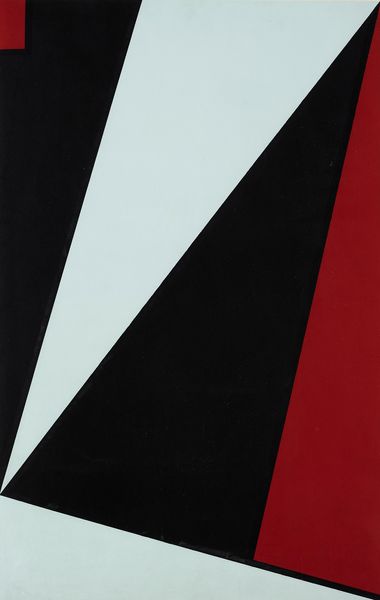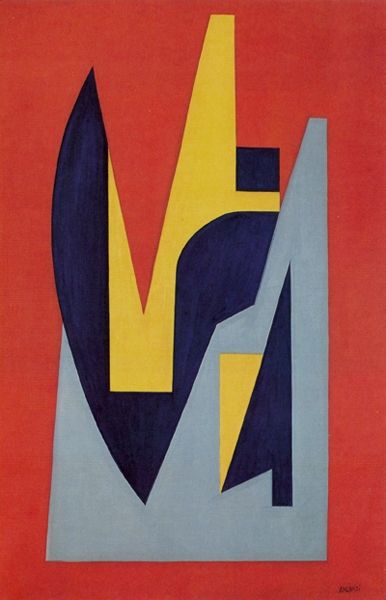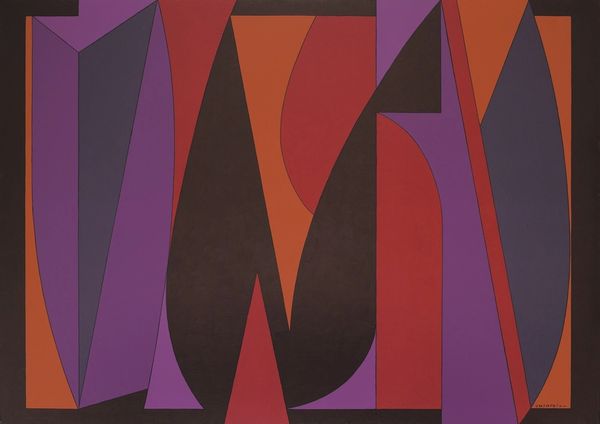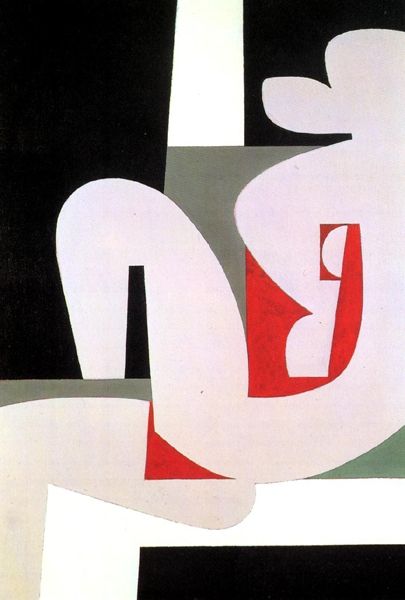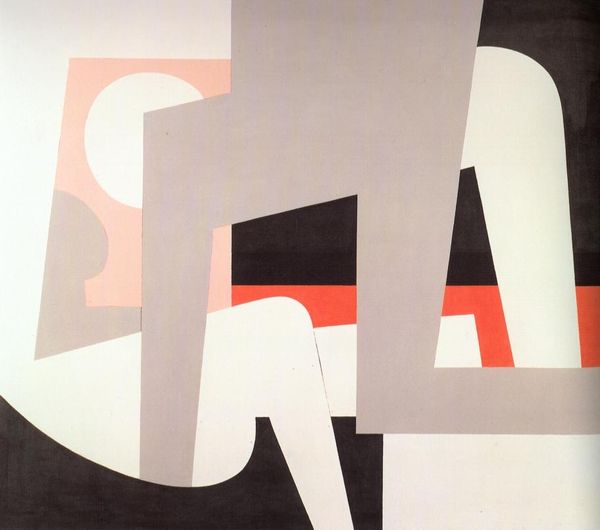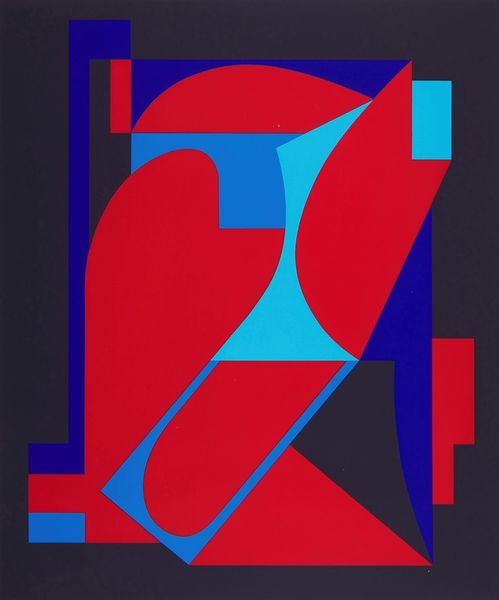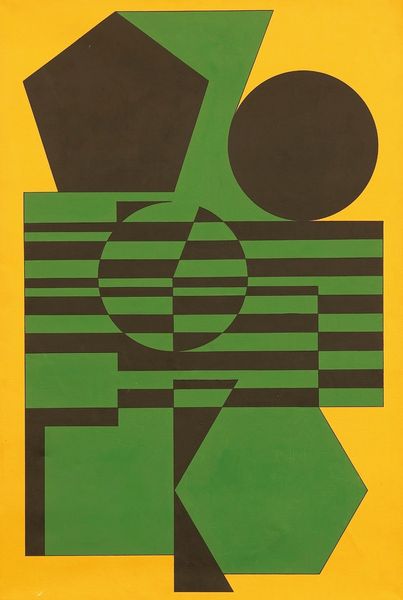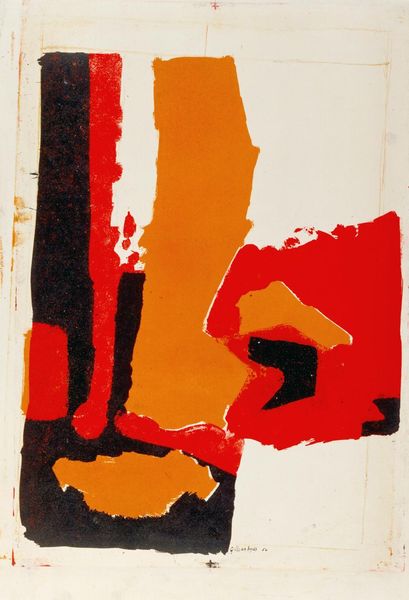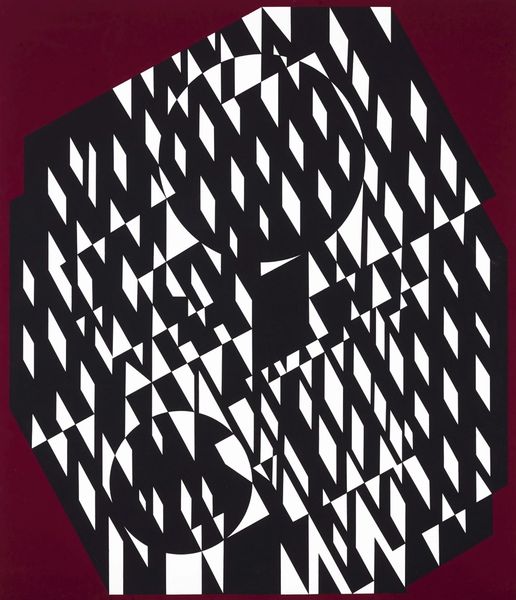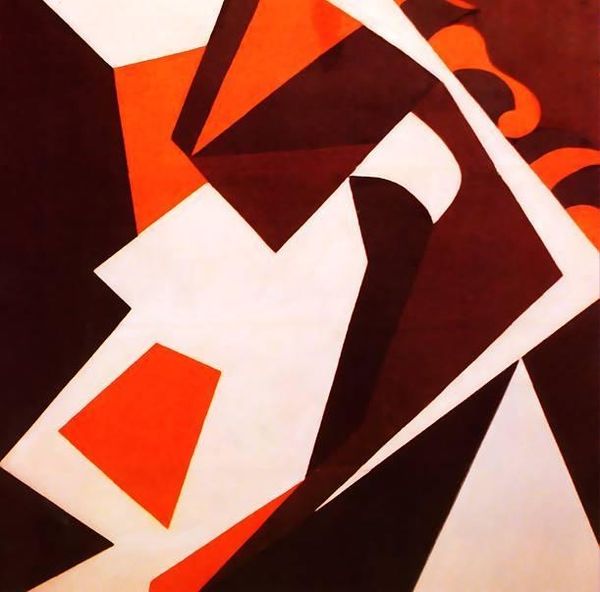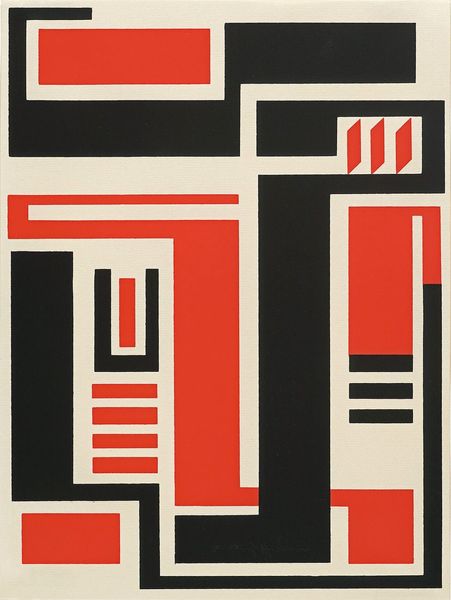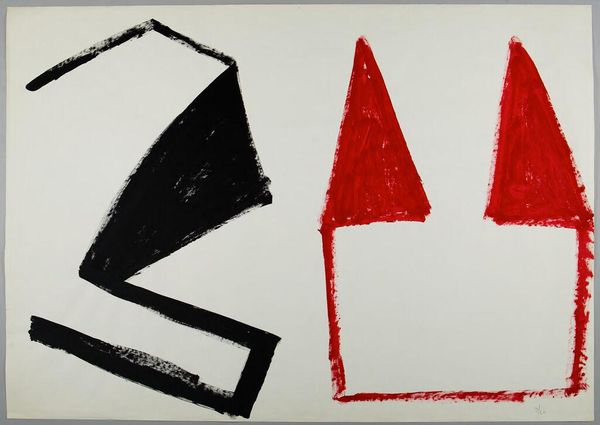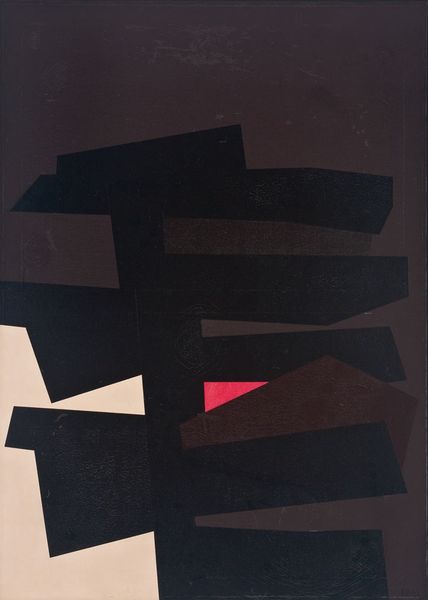
acrylic-paint
#
op-art
#
pop art
#
acrylic-paint
#
abstract
#
acrylic on canvas
#
geometric-abstraction
#
abstraction
#
modernism
Copyright: Modern Artists: Artvee
Editor: This is Victor Vasarely's "Chillan" from 1952, done in acrylic paint. The striking red and black shapes give it such a bold presence. What social statements can we explore from this particular work? Curator: That's a perceptive observation. It's critical to view Vasarely's work, and particularly "Chillan," through the lens of its historical context. The mid-20th century was a time of rebuilding and redefining identities post-World War II. Given its date, the stark contrasts, combined with this exploration of geometric abstraction, can read as an effort to establish a visual language divorced from the representational, one aiming for universality, maybe even a utopian vision. How do you interpret the role of abstraction in shaping new social narratives after such a devastating war? Editor: It almost feels like a visual reset, wiping the slate clean. I am trying to comprehend that in abstraction you can express your cultural awareness in many different languages and approaches. I believe Vasarely uses abstraction in geometric forms. Is there another dimension of cultural expression we could interpret in his work? Curator: Absolutely. Look at the interplay of positive and negative space. Considering feminist theory, one could analyze how the forms either assert dominance or cede space, almost like a visual representation of power dynamics between genders. Does the composition strike you as harmonious, or does it suggest tension and imbalance? Editor: Now that you mention it, there's definitely tension. The black feels like it's pushing against the red, which makes me consider these elements within social conflicts, within politics... Curator: Precisely! And thinking of that...the vibrant colors can read as either a challenge of existing structures, or maybe even a violent revolution to what it used to be... It definitely invites a deeper interrogation of visual culture as an active participant in broader social and political discourse. Editor: This gives a fresh perspective to explore more deeply. I learned new ways to perceive the artwork under sociopolitical conflicts and theoretical discourses. Curator: Exactly. That’s why contextualization is so vital; the piece serves as a historical marker, a narrative of reinvention that we must continue to examine.
Comments
No comments
Be the first to comment and join the conversation on the ultimate creative platform.
